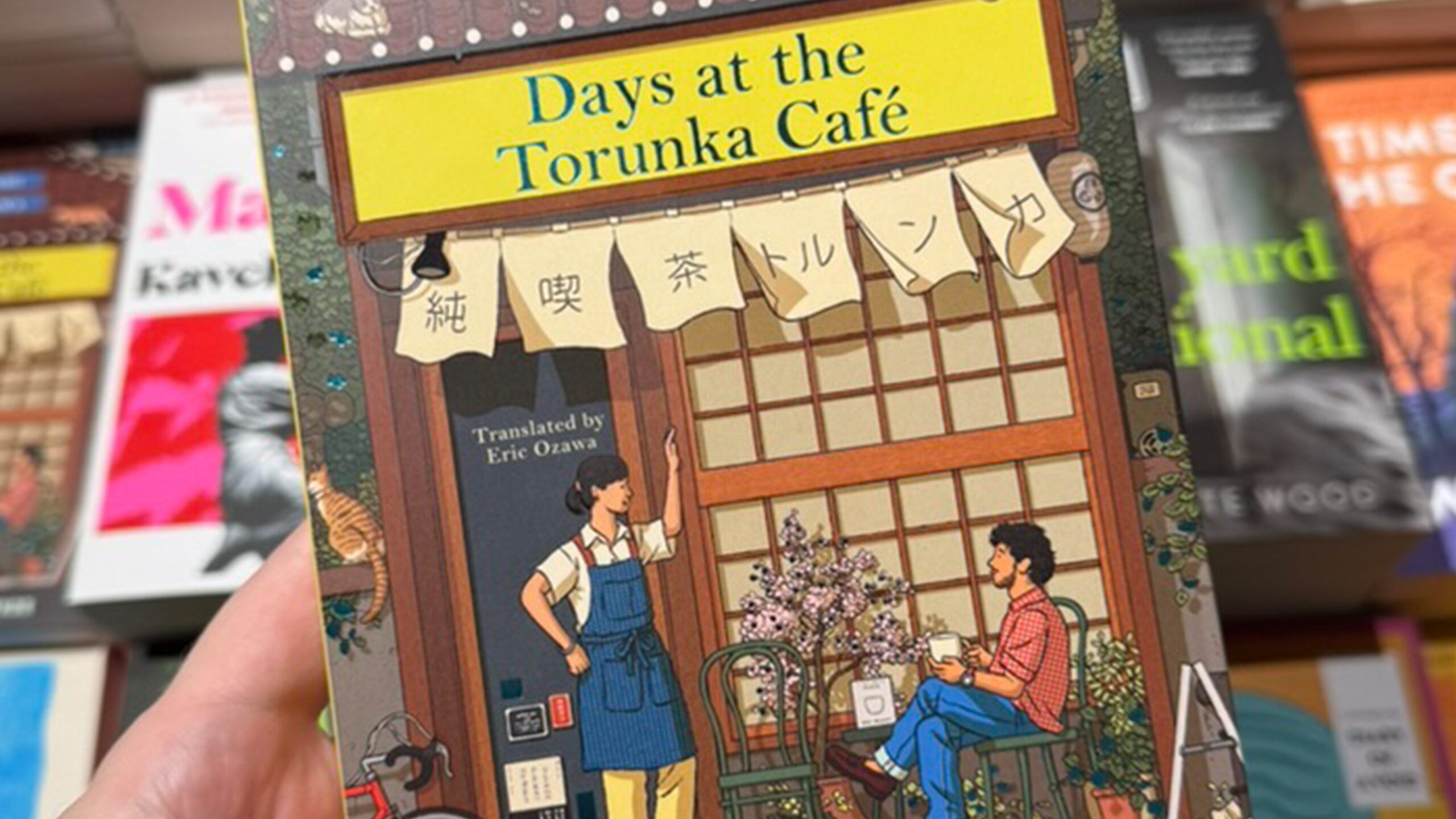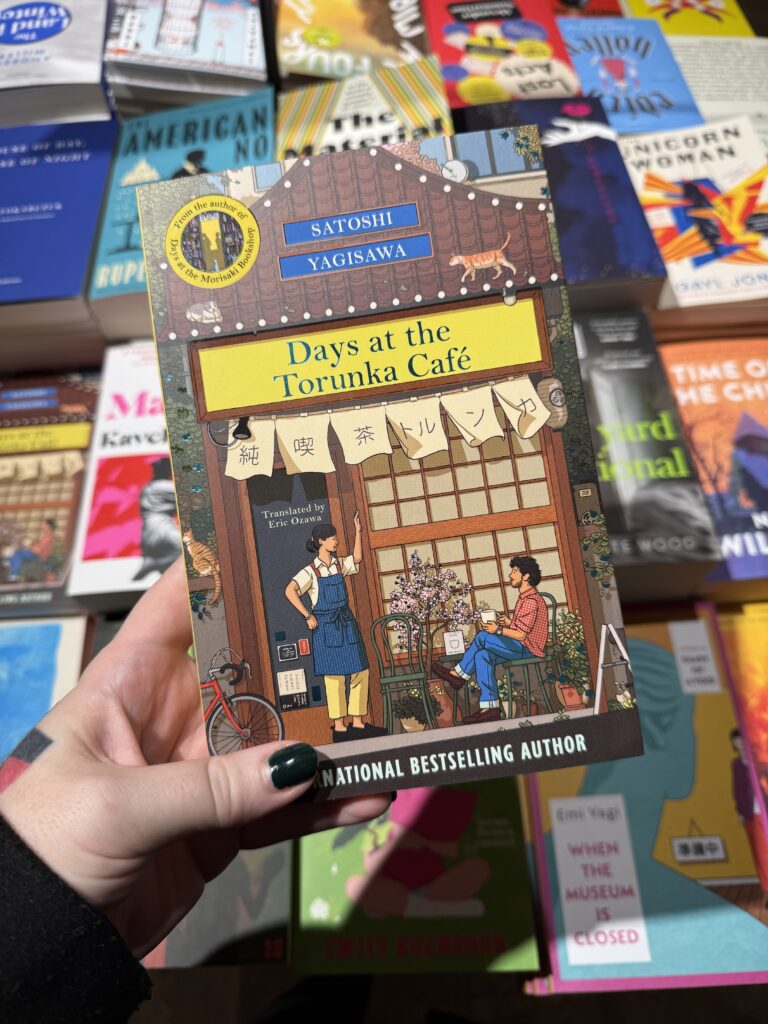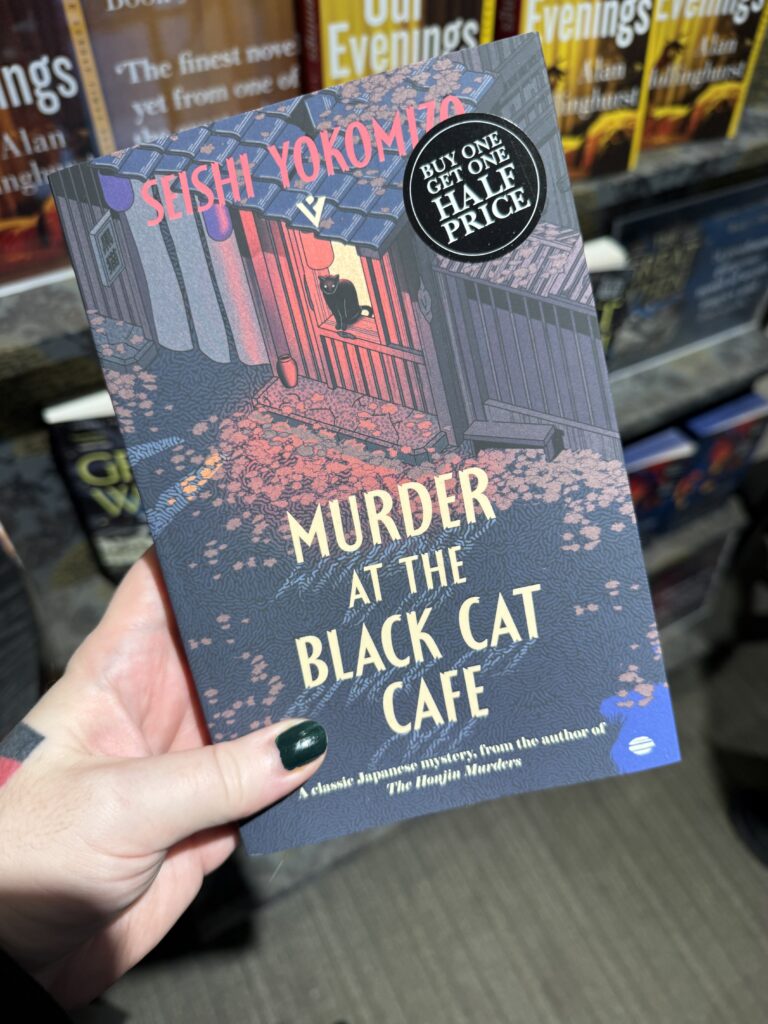
This week I found myself lingering on the pages of not one but two cosy café reads. Pages full of complex relationships, love, loss and mysteries. Though very different styles and moods, they share the same cosy vibes, both with stray cats leading the way.
Days at the Torunka Café by Satoshi Yagisawa

Three glimpses of relationships anchored in a cosy café, where love and loss unfold with tender ambiguity.
I feel very lucky that Harper Collins and Edelweiss made it possible for me to be able to read the ARC edition of Days at the Torunka Café, in the run up to its release. Last September, I thoroughly enjoyed Days at the Morisaki Bookshop, which got a solid 4-star rating, and its sequel is on my physical TBR shelf. Days at the Morisaki Bookshop was warm and uplifting and was simply the perfect cosy read.
3 Stories of Love and Loss
Days at the Torunka Café is certainly different to Days at the Morisaki Bookshop as although it has an over-arching plot, the book is split into three short stories: ‘Sunday Ballerinas’, ‘The Place Where We Meet Again’ and ‘A Drop of Love’, which are all anchored at the Torunka Café.
All three narratives focus on complex relationships with a dash of hope, but there is no opaque resolution, but in some ways that’s part of the beauty. You’re a quiet bystander, almost a patron of the Torunka Café, but with insight beyond the closed doors. Similarly to Days at the Morisaki Bookshop the read is cosy, but it didn’t quite hit the same sweet spot.
Living and Breathing the Setting
The characters were certainly interesting, but bar the café, the setting was not as effectively portrayed as Days at the Morisaki Bookshop – where you could almost smell the dust on the old books and taste the coffee in the café around the corner.
Is it worth a read? Absolutely. If you like your cosy reads, then Days at the Torunka Café is a perfect addition to your TBR. I perhaps fear that my love for Days at the Morisaki Bookshop have created a standard that Days at the Torunka Café just didn’t meet for me.
Murder at the Black Cat Café by Seishi Yokomizo

A fast-paced slice of classic cosy mystery that pulls you straight into its smoky, noir-inspired world and keeps you turning the pages
The Murder at the Black Cat Café appealed to me for its cosy mystery feel. I was drawn in immediately. The writing style engaged me and took me to a period which I love for a good detective novel, a time before technology, the speed of the present day and the lack of communication we have. Similarly, I have The Honjin Murders sitting on my physical TBR screaming at me to read it.
A Strong Start & Cosy Noir Atmosphere
The novella, as I came to find, starts out so strong and is wickedly fast paced. We are introduced to an abundance of characters with the revelation of a dead body on the property of the Black Cat café early on. There’s not beating around the bush. Seishi Yokomizo’s framing narrative is wonderfully done, interweaving the narrator into the story. The setting is deeply noir-inspired. Most of the storyline is a surprise to the reader, which for a mystery, is essential. There was one character I was a little suspicious about from early on, and I was right to be. Yet that didn’t play a significant part in the punchline at all.
The exposition for the last quarter of the novella, was not to my liking. I know it is a common device of old detective stories and therefore, relevant and in keeping with the genre. I just think it perhaps was a bit too much for me. So saying, I couldn’t put it down. I was turning page after page, I wanted to know what happened next. I genuinely feel that Yokomizo could have fleshed this out, maintaining the cosy mystery feel, and made it into a book of its own. Yet, ‘The Murder at the Black Cat Café’ is not simply the one story. It has been coupled with another short story ‘Memorandum concerning the Honiden Family’ to make up The Murder at the Black Cat Café novel.
A Note on the Bonus Story
My review and rating reflect ‘The Murder at the Black Cat Café’ only. I chose not to read this story as the tone is quite different, and as a mood reader, the change in tone jarred for me a little. This is no reflection of the story, and that I may return to it at a later date.
Closing Thoughts
Both of these books, though different in tone, are beautiful reminders of how cosy translated fiction should be presented. They’re quiet and observational, and perfect café reads.
For this double review I decided to include a playlist the captures café vibes, with some smooth jazz and piano pieces, to accompany you in your ready journey, or the next time you visit a cosy café to spend some self-care time.
Thank you for pausing here with me today. May your next coffee be gentle, and may story keep you good company.